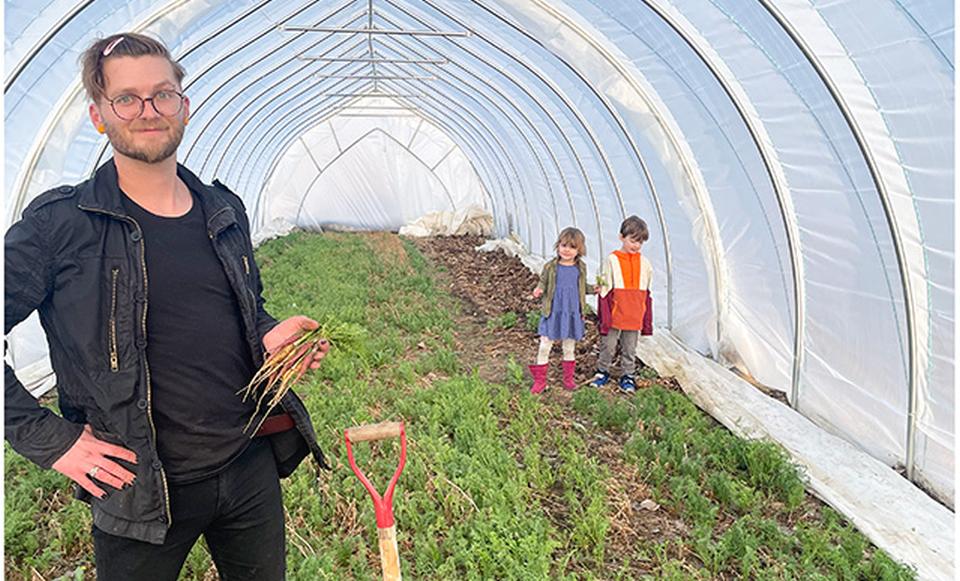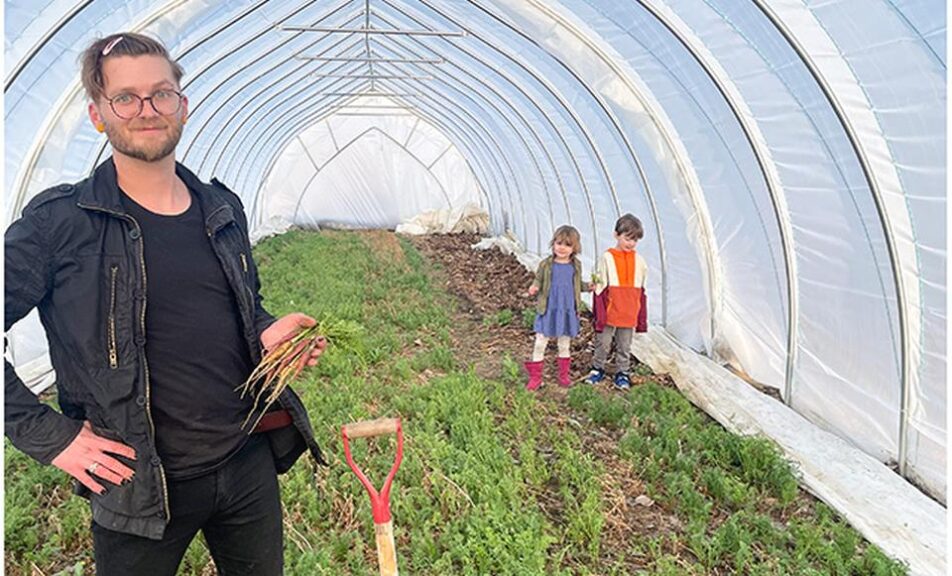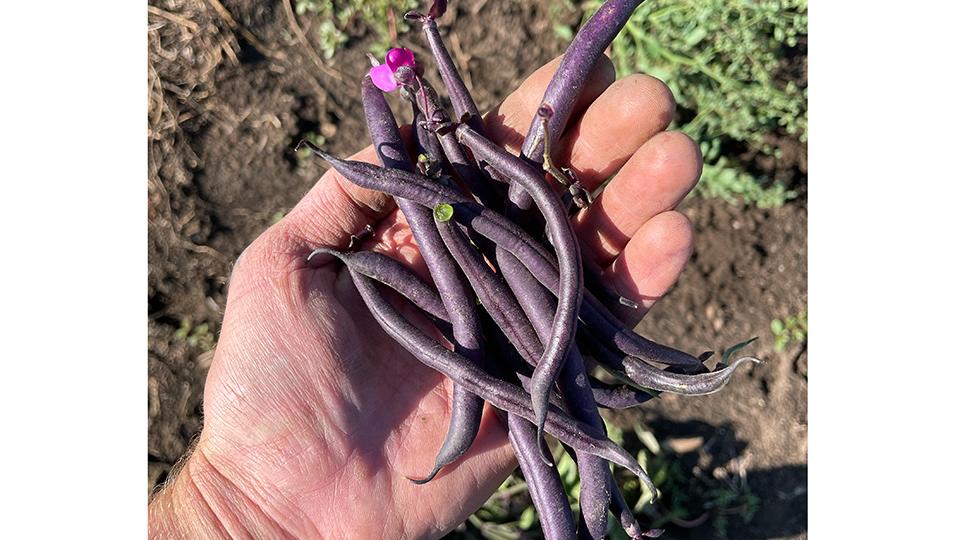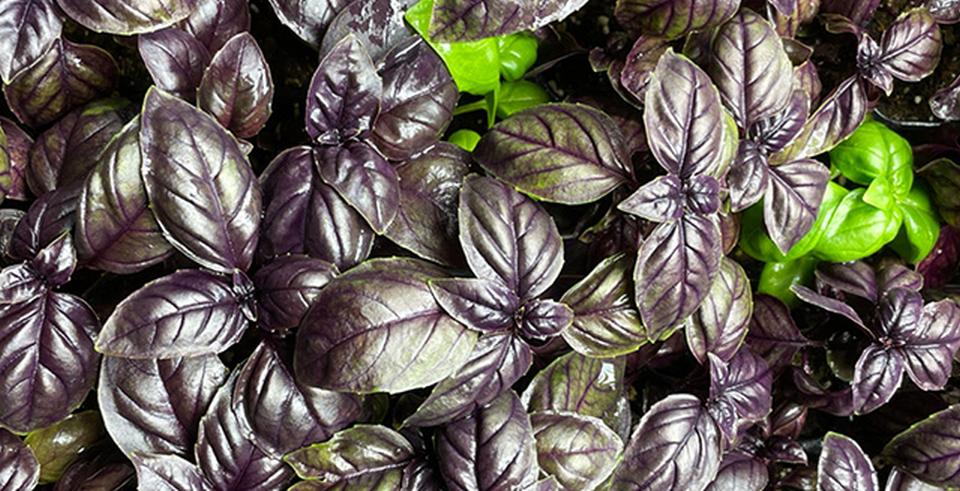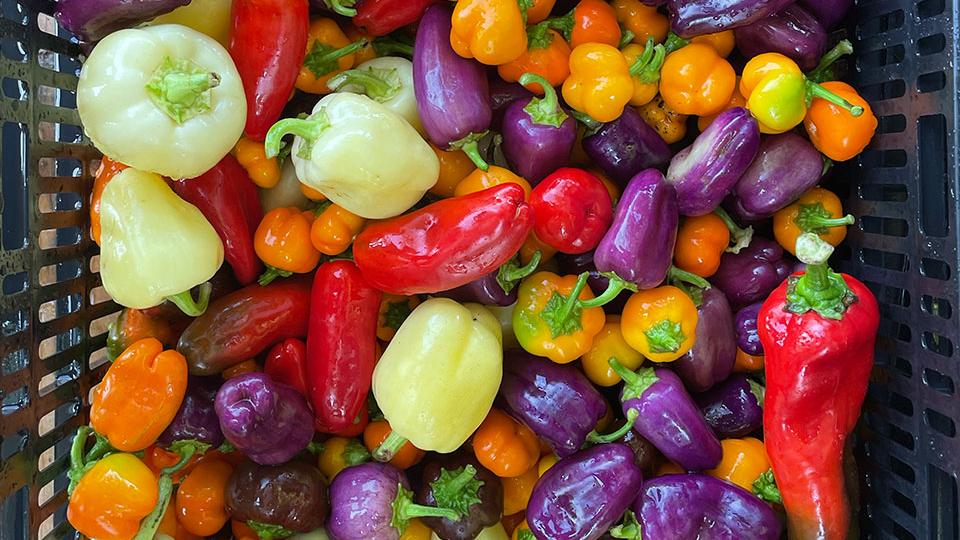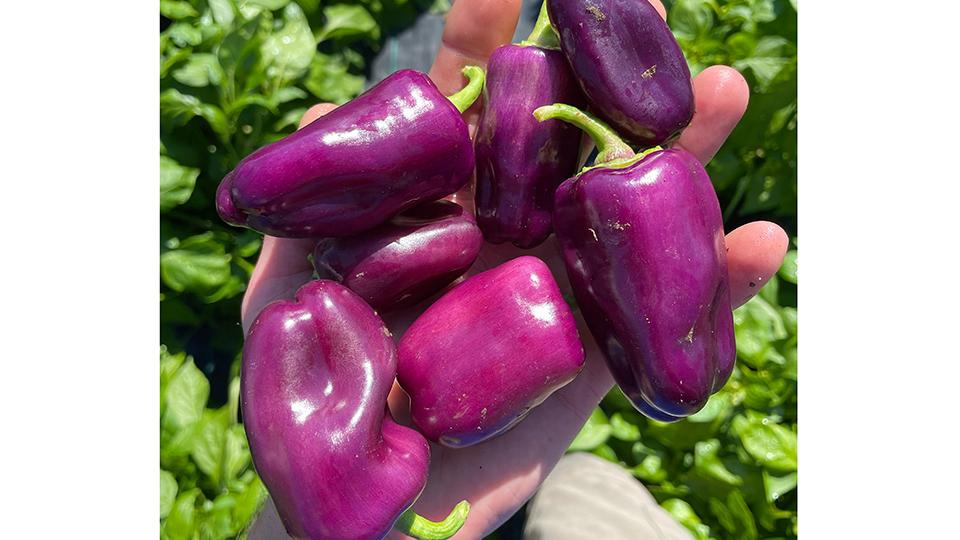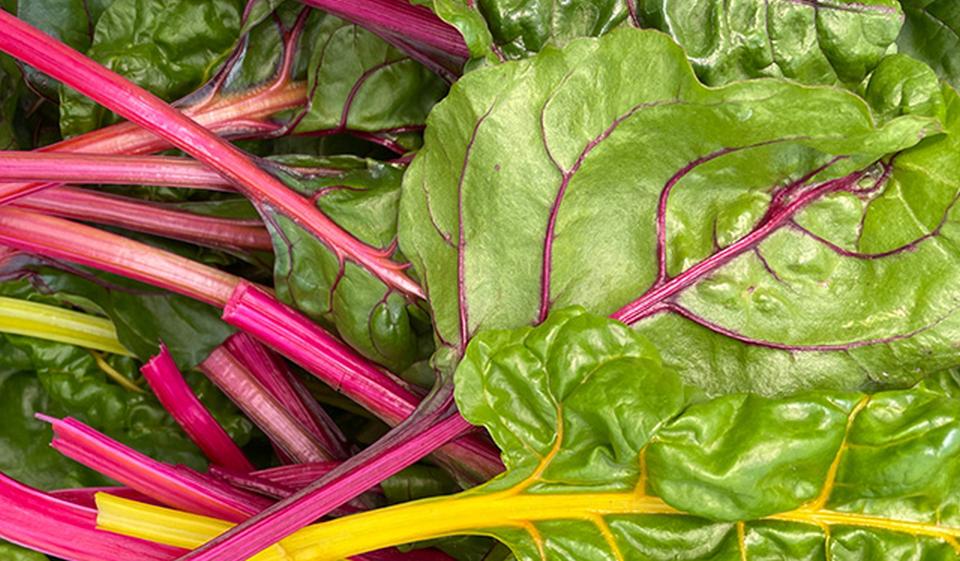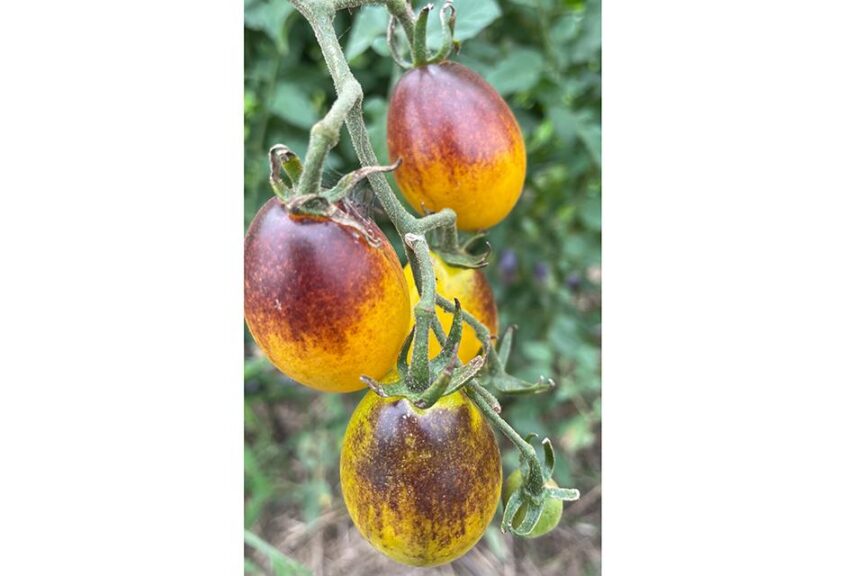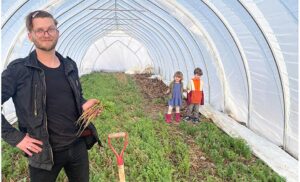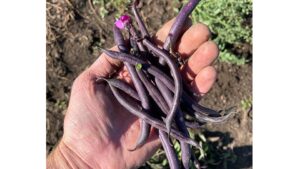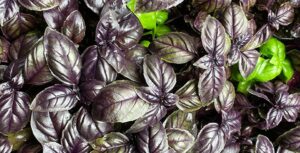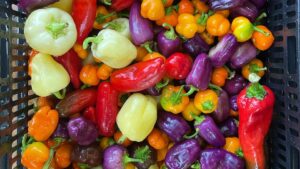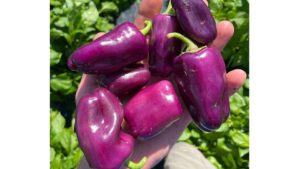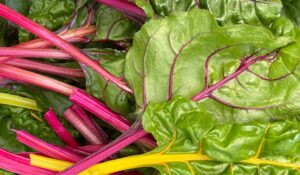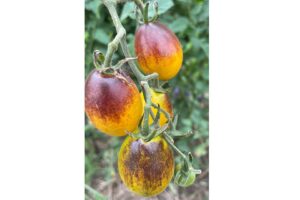Uncommon Produce Stepping up to the Plate for This South Dakota Grower
Jeremy Nelson likes to think outside the box — unless that box happens to be full of 64 crayons. While explaining why he grows alternative crops, or, as he likes to call them, “uncommon produce,” Nelson stresses the importance of color. Shape, too. But certainly color. No vegetable is too flashy or unique for his 15-acre operation, Tillford Rye Farm, outside South Dakota’s largest city, Sioux Falls.
“When flipping through seed catalogs for a fun twist on familiar vegetables, I’m looking for eye-catching colors, interesting shapes, or specific uses,” Nelson says. “Other times I am looking for a completely unique product that isn’t available from any other farm in the area.”
Off the top of his head, he cites odd-colored kohlrabi, South Dakota artichokes, which have a slight purple color and are bred for northern climates, and cylindrical-shaped beets, ideal for canning.
“I like to grow unique produce to set myself apart from other great farms in the area and to provide customers with a fun alternative to the typical options,” he says. “It is also a lot of fun to experiment with new crops each season. I like to find what looks interesting but also tastes exceptional.”
Menu for Success
Nelson has no trouble marketing his specialty items in the Sioux Falls area, often at a higher price than their standard counterparts, he says.
“To me, as a farmer and business owner, there are only upsides to producing unique vegetables. Why grow the same old thing that’s always been grown, that’s still being grown by everybody else?” Nelson says. “Trying to fill the gaps in your local market is a great starting point. You can get the steady sales from a missing staple, and then also have the market command to introduce some fun specialty varieties.”
Sioux Falls Community Supported Agriculture allows Nelson the opportunity to experiment with new or unique crops on a smaller scale, he says. On the wholesale side, he works directly with restaurant owners and chefs to accommodate special requests.
“Sometimes that is for an item I don’t normally grow. Sometimes it is for a familiar item in an unusual color, or shape, or size,” Nelson says. “It’s always fun to work so closely with restaurants and see their menus adapt to seasonal availability.”
Purple sprouting broccoli has been a great seller the past few seasons at restaurants and other wholesale outlets, Nelson says. Red and yellow Italian sweet peppers as well as uniquely colored cherry tomatoes are some of his classic favorites, he adds.
“I think the artichokes are the headline grabber; people are always astonished to see them. I also really enjoy growing a French melon called ‘Charentais’, which is basically a super sweet and aromatic European cantaloupe. Just a couple will fill the entire room with a mouth-watering scent. In the past I’ve also grown large quantities of red, yellow, and orange sherbet-colored watermelons for a local brewery.”
Working with an array of customers of different cultural backgrounds also opens up the potential for growing varieties or items unique to a particular cuisine. At Sanaa’s Gourmet Mediterranean restaurant in downtown Sioux Falls, Nelson has provided kusa summer squash and fava beans along with Lebanese cucumbers and black eyed peas. A mile away, at Parker’s Bistro, another chef request has allowed Nelson the opportunity to provide squash blossoms for a short-lasting seasonal menu.
“When it comes to out-of-season vegetables, winter farming is king,” Nelson says. “Certain items can be grown in tunnels, heated or not, through the winter in our northern climate. The cold weather forces the starches in these plants to turn into sugars as a natural antifreeze to withstand the cold temperatures. The end result is an exceptionally sweet, tender product. One of my tunnels is currently filled with carrots that I’ve overwintered. They will be an early, extra tasty harvest.”
Distinct from Day One
An unexpected turn of events led to the start of Tillford Rye Farm in Garretson, SD, in April 2017. To that point, Nelson had been working outside of Minnesota’s Twin Cities at Gardens of Egan, a large organic vegetable farm.
“It was an amazing operation to learn from and the place where I began to think of farming for myself at some point,” Nelson says. “It was at that time I started to make plans for a future farm in Garretson.”
Nelson rented a piece of land from family members, took it out of row crop production, and planted cover crops to rehab the soil until he would eventually begin his own farm. Gardens of Egan then closed with little notice, and everything became fast tracked, Nelson says.
“What was a five- to seven-year plan now happened in less than two,” he says.

American Vegetable Grower’s GROW STRONGER initiative brings you positive stories from progressive growers filled with innovative solutions to help you grow a stronger future.
Arriving in April left little time for starting transplants, establishing fields, and setting up infrastructure before planting season. Nelson’s first crops and sales were microgreens, which offered a quick turnaround because most varieties can be planted and harvested within seven to 14 days.
“I could also grow and process them indoors while it was still cold,” he says.
Interestingly, even in that harried first year, Nelson scoured seed catalogs for unique items, whether it be color, shape, or otherwise.
“I was entering into a local food scene that already had a few longstanding operations, so I wanted to set myself apart,” he says. “For example, cherry tomatoes with heavy anthocyanin expression that makes a bluish coloring; Italian sweet peppers rather than the standard bell peppers; shishito and pimento cheese-stuffing peppers; a specialty mini butternut with unmatched flavor; or purple Genovese basil. I still grow these and have added other unique items over the years.”
Soil Health Advocate
Although not certified, organic production has always been the model for Nelson and, by extension, Tillford Rye Farm. This includes adhering to the five basic tenets of regenerative agriculture:
• Keep soil covered
• Minimize soil disturbance
• Increase crop diversity
• Keep living roots in the soil
• Integrate livestock
“A healthy, functional farm ecosystem can reduce the need for additional amendments like fertilizer or minerals and even eliminate the need for pesticides,” Nelson says. “All this contributes to tastier, cleaner, more nutrient-dense food.”
Nelson prepares his growing spaces with broad forks to loosen the soil but not turn it and, when necessary, a shallow tillage tool that only disturbs the top 2 inches of soil. Both practices preserve the vital structure of the soil, which benefits water infiltration, nutrient cycling, and the microbiology.
Goats are moved over cover-cropped areas and spent fields in the fall to eat residue, fertilizing the ground and enriching the soil biology at the same time. With specific flowers, herbs, or companion planting arrangements, Nelson can deter pests and attract beneficial insects that help pollinate crops and prey on the pests.
Large fields are rotated each year so that one is always fallow, sown with a diverse mixture of cover crop seeds, such as buckwheat, sunflower, turnip, rye, Sudan grass, peas, etc. As much as possible, Nelson covers all open bed space with straw mulch and is in the process of converting aisles to a living mulch that can be maintained, such as clover.
“In a world where industrial farming that relies on toxic chemicals and heavy tillage is the standard, regenerative organic agriculture is a specialty form of production,” Nelson says. “I think part of what makes any commodity a ‘specialty item’ is that it meets the needs/wants/values/aesthetics of the customer above and beyond the standard option.
“It is possible to market the benefits and outcomes of regenerative ag, and we should. I think more and more customers are looking not only for a premium product but also for a farm or business that aligns with and promotes their values. There are restaurants and grocery stores and people that will buy your produce because it was grown with regenerative practices. Some of them will even pay more for it.”
Proceed with Caution
In any case, Nelson recommends not putting all your eggs in one basket. Specialty crops complement standard vegetable production, but they do not replace it, he says. Such unique items always carry some inherent risk in terms of marketing, simply due to lack of familiarity.
“Sometimes we need to educate and expose our customer base to new or unique products — what it is, how it differs, what it’s used for, why it’s better, etc.” Nelson says.
There is also the educational component for farmers who need to provide the proper growing conditions for crops they have never grown before. And while growers can get a higher price on uncommon and unique vegetables, for the most part, they are also selling those items in smaller quantities than standard veggies, such as bell peppers or paste tomatoes.
“Again, it’s important to test out the market’s appetite for specialty crops. For me, it’s equally important to actively stoke interest in the unique items I find personally gratifying to farm,” Nelson says. “I want people to be as excited about these crops as I am. Quality photographs and education are great tools for marketing unfamiliar products and are especially effective when you’ve got such colorful and uniquely gorgeous vegetables.”
At a Glance — Tillford Rye Farm
Owner: Jeremy Nelson
Year founded: April 2017
Location: Garretson, SD
Size of the farm: 15 acres, about 1.5 acres in production
Crops grown: Everything our northern climate can handle
Customers: Wholesale restaurants, grocery stores, institutions, online marketplaces, and Consumer Supported Agriculture





